Brian K. Vaughan’s Characters: From Lost to Saga
Brian K. Vaughan is a name that, to many, held little relevance until quite recently. If you grew up on comic books, you likely know of him. If you grew up on video games and theatre, maybe comic books were never a huge part of your life, and you don’t know of this incredible storyteller. But here you are reading about a brilliant comic author, so maybe the influx of Marvel movies and TV comic adaptations has intrigued you. Maybe you were looking for English credits to round out your degree and you stumbled on a History of Comic Books class. “Cool,” you thought, “I love The Walking Dead.”
Brian K. Vaughan started with Marvel back in 1996. Now, this isn’t widely regarded as a great time for comics, and if you didn’t read comics in this time, don’t let that bother you. If your father taught you to fish, or if he introduced you to Half-Life instead of Batman, don’t worry. He was still a good dad.

Vaughan worked on some major characters in a terrible time for comics. Vaughan has written Wolverine, Mystique, Cyclops, Captain America, Spider–Man, Dr. Strange, Batman, Wonder Woman, and Green Lantern. Obviously, this in itself would be a resume to be proud of, but superhero comics are not Vaughan’s main strength. He writes complicated arcs that begin, prosper, and end. He thrives with a whole story at his disposal, not having to worry about taking over or handing off characters. He writes more of a finished story, one that you can accidentally fall back in love with on the nights when you have one too many glasses of wine. Vaughan is an expert storyteller, looking to take you into his hands for 200 pages, for 1000, for five years.
This is a man who worked on Lost, and please don’t write him off for that. He worked on The Man from Tallahassee, and some of the best episodes of the series. You remember? “No John, we don’t have a code for ‘There’s a man in my closet with a gun to my daughter’s head.’ Although we obviously should.” All through those wonderful episodes he worked on (he didn’t work on season six – feel better?) he was writing incredible stories with beautiful characters.
2002 marked the beginning of this writer’s apotheosis (haha), and his ascension to being dubbed one of the greatest writers of the past 15 years. He has been likened to Frank Miller and Alan Moore. It isn’t coincidence that his recognition took off after Y: The Last Man, with almost all of his 12 Eisner Award wins for original characters and stories. Since being nominated for Y: The Last Man and Ex Machina, he has created wonderful stories with dozens of other artists. We will just address a few of the creator-owned works of the last 15 years.
Ex Machina

Ex Machina is the least unique comic in this list. Frankly speaking, it seems to be half way through Vaughan’s slow progression out of superhero comics and into the quirky characters and outrageous scenarios that would mark his later work. Mitchell Hundred is a civil engineer turned superhero, who goes by the name The Great Machine (he can communicate with advanced machines). The Great Machine is present for this universe’s version of 9/11, saving the South Tower, and Hundred is elected as New York’s mayor shortly after. From dealing with day-to-day politics to managing New York during a blizzard as a killer keeps offing snow-plow drivers, Ex Machina breaks away from the superhero comics we’ve all seen and love. It is a beautiful departure, but not at the heart of Vaughan’s style or achievements.
Artistically, Harris, Feister, and Mettler give us something incredibly easy to get behind. Their art focuses on the story, and doesn’t intrude on what Vaughan is trying to do with the characters and plot. There is something to be said for this style, but the art avoids becoming definitively characteristic in what seems to be an acknowledgement that the story is the most important thing. To clarify, story is wonderful, but art in comics should jump in and take responsibility for the story, not yield to it. Do you watch The Newsroom? This art is Will before Mackenzie. “It’s popular because it doesn’t bother anybody.”
If you are interested in politics or engineering (or the overlap in the politics/engineering venn diagram), this book will make you smile, sweat, and giggle. If that doesn’t sound like your cup of tea, then give Ex Machina a pass and dive straight into Vaughan’s shining accomplishments.
Y: The Last Man
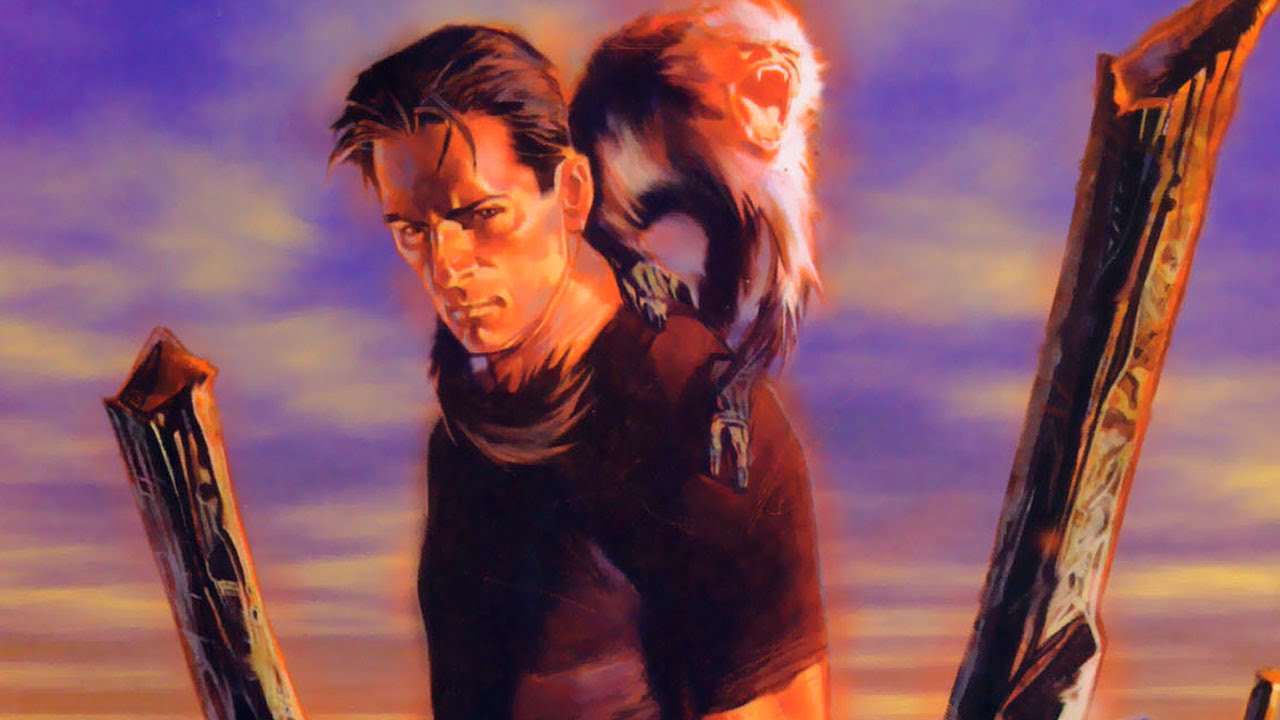
Y: The Last Man is one of the crowning achievements of Vaughan’s career. It is a comic that writers such as Robert Kirkman used as a touchstone to compare their own works to. Kirkman even wrote about feeling weird about The Walking Dead breaking past 60 issues, as it felt odd to move beyond the length of such a beautiful, iconic story. Kirkman also uses the pages of The Walking Dead #61 to allude to the frequent Y: The Last Man lesbian sex scenes. So let’s get to why you should read this puppy.
We’ll start with the art. What all of these artists accomplish is a world where they can be realistic, where they can be fantastical, and whatever they do with any given issue makes sense and tells the story. This world that they have dreamed up could be our Earth, is our Earth, but they take so many liberties with what is real and what gets shown. What you see above is not quite the art of the comic book: that is a cover. The art inside the covers makes Yorick feel like a real person, but he also feels like a cartoon. What Y: The Last Man does so well is it creates a world where two ideas can contradict and both are true. In art, in story, in characters. Yorick is a coward and a hero.
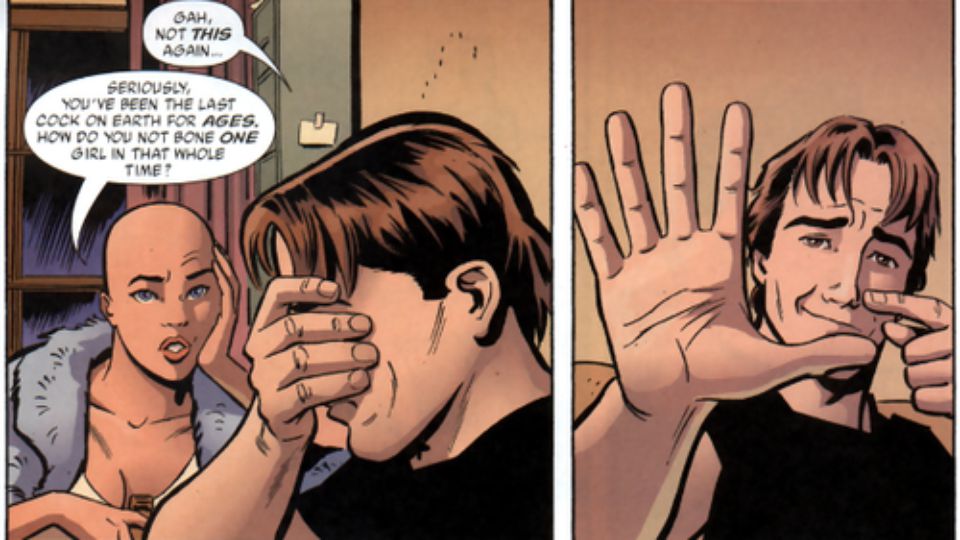
The story, the art, the paper it is printed on, the characters… the characters, man. This is a character driven story, a story that puts every man who reads it into the shoes of a young man named Yorick, the last man on Earth as a sudden plague simultaneously kills every Y chromosomed creature on the planet. For some reason, Yorick and his monkey survive. It is a story about society changing in the absence of men. About the strength and endurance of women. About the universal human desire to be in charge and in control. About prejudice. About overcoming prejudice. Tragedy and comedy, slights and abuses. This story has the charm to make you think, “Maybe it was written just for me.”
Yorick is an escape artist named after a dead Shakespeare character. There are issues that focus on theatre companies, and references to theatre abound. Apart from that, though, it is just expert storytelling. Vaughan manages to tell the story you expect while letting it be predictable. He writes brilliant women, stupid women, intimidating and fragile women. And Yorick, this dumb-ass man who just wants to see his girlfriend again, but hey, he is the last guy around, so it’s cool if he slips up now and again, right? Politics, violence, sex, existentialism, drugs, BDSM, Noh theatre, samurais, secret agents, female presidents. 60 issues packed with stories that run through the heads of 23-year-old boys as they lose focus in first year Canadian politics courses. Women readers tend to speak highly of it as well. As with anything written by a man, about a man, depicting women, there is a bit of controversy, but Vaughan doesn’t write this story by putting down women and appealing to base masculinity. There are definitely moments that empower women and moments that fail to, but that seems to stem less from Vaughan’s manifesto about women, and more from his portrayal of women as having different opinions themselves. It’s main progressive failure is an inherent cissexism that is present, but not particularly prevalent.
If Stephen King said it was the best graphic novel that he had ever read, would you want to read it? (He did).
Pride of Baghdad
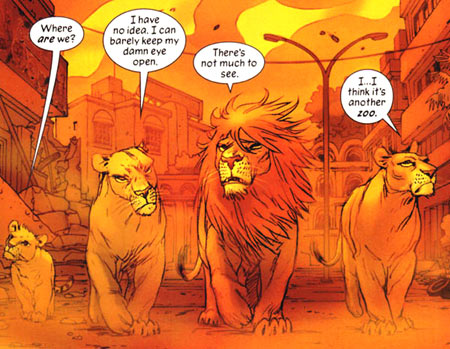
Pride of Baghdad was written by Brian K. Vaughan, with art by Niko Henrichson.
Pride of Baghdad is a single book inspired by the escape of four lions from the Baghdad Zoo during an American bombing in 2003. Vaughan’s story takes the perspective of these lions, giving personalities to the news headline. It is a story that raises questions about the nature of freedom, the ethics of dragging an animal from its home, and the less-thought-of effects on animals of war between humans, or “the keepers.” The story of these lions is a heartbreaking tale exploring the negatives of captivity, but also the negatives of freedom. Their world in the zoo had food delivered every day, but in the wild, sometimes they would only eat twice a week. Is it better to be fed but never see a horizon? That’s where the animals differ. For a story about four cute lions, there is a surprising amount of violence (or not surprising, given the war), emotion, and even an incredibly disturbing rape scene (TW) which all comes together to make these animals feel more human than a lot of human characters we see in comics. Have something funny or quirky ready to read after this one. Maybe Fraction’s run of Hawkeye, which also comes highly recommended (though now we are deviating from this article’s premise, oh no!).
Henrichson’s work here really completes this story. If the lions didn’t have the real-world lion qualities of being beautiful and terrifying, they wouldn’t have the same impact. The lush forests and dry desserts exist in the same world, and almost seem to belong together. Henichson’s world is a real place, existing both in the comic and our real world. Henrichson illustrates a Baghdad you can believe (even with almost no knowledge of Baghdad – anyone who has been there and read this comic, please speak up). Plus, you get to see how Niko draws a giraffe’s head exploding. So there’s that.
Saga
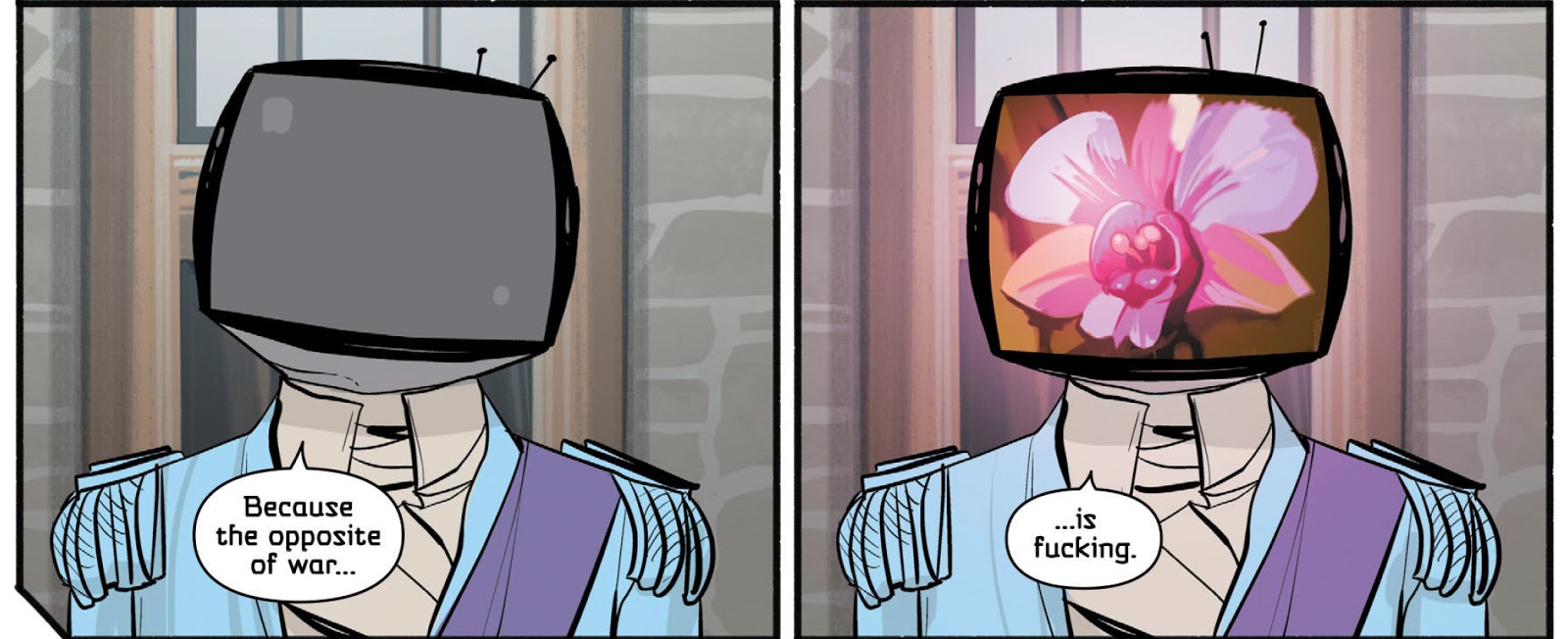
A quick Google search will lead you to at least half a dozen easily accessible articles titled something along the lines of ‘Ten Reasons You Should Be Reading Saga.’ This is the only comic on this list that is a few years old and still running, with no real indication as to when it will end. Vaughan has said that he wants it to run one issue longer than The Walking Dead, so it looks like we could be sharing Hazel’s world for quite some time.
And what a world it is. Vaughan says he dreamt up this world as a child, but he could not have achieved what he has without Staples. What she brings to Vaughan’s story is a sense of epic proportion. The style that these two have collaborated to create is a world where anything is possible but everything is real. Each issue is 22 pages of art—22 pages you could hang on your wall. 22 pages of glorious colours and shapes and stories, and more than a fair share of alien boobs and dicks. Pick Saga off the shelf for the art. Stay for the world. Stay for the universe.
Because Saga is just that: a world, a universe, a saga. It is a huge, grandiose, winding, and twisting journey filled with sex and violence, as are some of our favorite adventures. And it manages all of these things in a comic that opens with “Am I shitting? It feels like I’m shitting.” This is a comic that has been described frequently as being “like Star Wars meets Romeo and Juliet meets Firefly.” … Okay? Those are all wonderful things.
It is a story of two people, Alana and Marko, who come from two completely different places, Landfall and Wreath. Landfall and Wreath are at war and have been for a long time. It is a war so extensive that most planets have a stake in the war, either siding with Wreath or Landfall. One thing is paramount in this war, though: there is no capacity for any type of friendship between people from these places. So when Marko and Alana conceive a child, Hazel, she is a threat to the integrity of the war. She is an icon showing that love is possible, a mantra that could kill the war.
It is about family, the sacrifices you make for those you love, and finding help in the most absurd places. Again, Vaughan and Staples have created these wonderful, beautiful characters. Marko and Alana are these young adults in the most intense throws of love, and as they grow, they mature. They fight, bicker, and they are cruel. They are never mean, but they (like me, like you, like us) are capable of great cruelties. They hurt each other, and they have to live with that and move past it. We watch Hazel grow up, learn to walk, talk, and she is our touchstone. She narrates, and we see her perspective on these events, told from some unknown future. At what point is she reflecting back on these tales?
Then you have the others. Izabel is one of the casualties of this great war, killed by a landmine, and her ghost is there for Marko and Alana, joining the adventures with all the sass that comes from being a dead teenager. The Will is a bounty hunter tracking down Marko and Alana to kill them, and take the crossbred child. He is a man with deep set morals, and rescues a six-year-old girl from planet Sextillion, where she is being sold for sex. He is accompanied by Lying Cat, who is just a cat who can detect when something said is a lie. Lying Cat opens the doors for beautiful moments in the story, calling out her friends when they lie about themselves, their ethics, or anything. There is also a family of Royal Robots, including Prince Robot IV, and a woman called The Stalk, who manages to be beautiful and intimidating despite her anatomical similarities to a Spider. She has eight spider-like appendages, eight eyes, and a barbed tongue. And it’s weirdly sexual; she sort of distorts childhood memories of Charlotte’s Web.
Also Ghüs. Let’s just look at Ghüs. How could you see this and not want to read Saga:
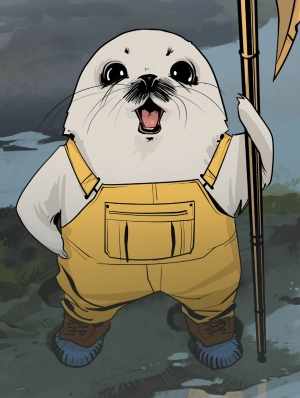
Read it. Ghüs is perfect.
We Stand on Guard
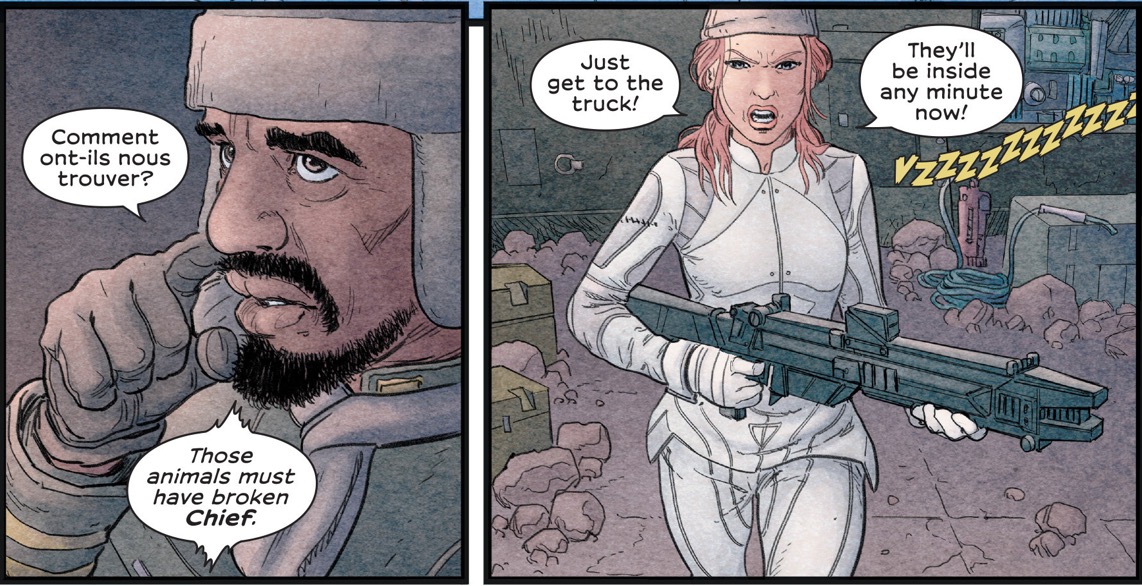
One of the things that makes BKV so wonderful (we are at the stage where we can call him BKV now) is his ability to tell a story so well working with so many different artists. Whether you’ve never read anything he has written or not, you have now seen stills/covers from five different series. We Stand on Guard looks nothing like Saga or Pride of Baghdad or Paper Girls, but his style adapts so well into each artist’s style. It’s seamless.
We Stand on Guard takes a simple concept and transforms it into a wonderful 6 issue arc. What if, 100 years in the future, the United States invaded Canada? It is the story of the Canadian resistance, fighting back against occupation by the US armies. The future we see Skroce draw is a harsh one. Blues and reds are most of the colours through the story. Fires and snows. The world that these two have dreamt up is a cold, desolate Canadian winter. And trust us, it’s pretty much like this up here, even in Southern Ontario. In the Prairies and Territories where We Stand on Guard takes place, this Canada is a forest of snow, a north that asks the question: why bother?
A series that isn’t afraid to talk about war and torture, and isn’t afraid to kill the characters the we fall in love with, there is so much to pull from this book. If you speak French, so do the characters, if you don’t, welcome to Canada. To a Canadian audience, this story is a chance to get excited about Canadian landmarks in BKV’s beautiful story, in Skroce’s detailed lines, alive in Hollingsworth’s blues and reds. If you aren’t Canadian, or aren’t familiar with Canada, there will be less here for you. It’s a beautiful book, yes, but go for Paper Girls if a Canadian story doesn’t excite you.
Paper Girls
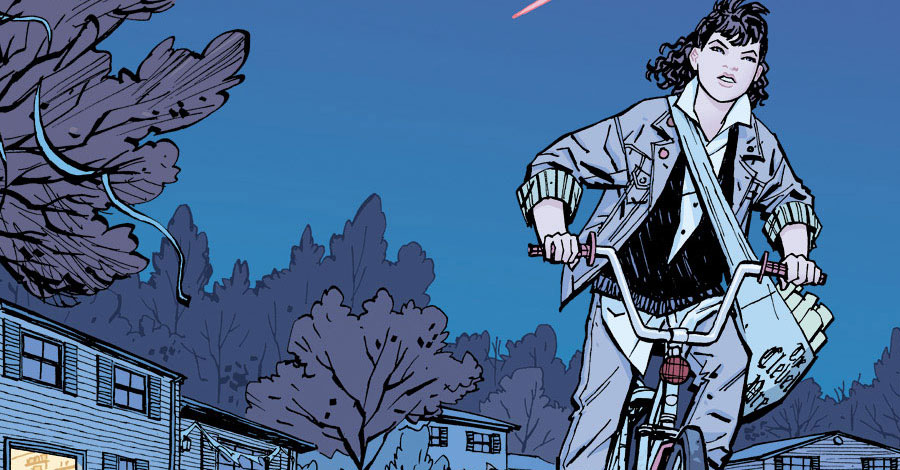
Speaking of Paper Girls! What if we do a story about time travel, teenagers on bikes, and Apple? Um… Let’s do it? Paper Girls follows four girls as they realize that the rapture is happening, maybe? Or is it an alien invasion? Or just the day after Halloween? It’s still pretty new, so we don’t have a lot of answers yet, having only one trade paperback so far, but Paper Girls is the newest BKV, the very recent Eisner Award Winner (Best New Series and Best Artist for Chiang), and one of the comics that fans eagerly await reading in the days leading up to the Wednesday releases. There are definitely aliens and time travel, but where do the teenagers fit into this? We just don’t know yet. But put BKV in charge of time travel (one of the people associated with the best points in Lost—remember?) and just wait to see what he does without a writer’s strike there to ruin his book.
This story is intriguing, to the point where it is almost impossible to describe without spoiling what is happening. It’s raw, it’s honest, and it puts four young women into the worst day of their life. Where it goes from there, the coming years will show us. Paper Girls grabbed our attention with its bold colours, with Wilson’s world being both drained of life, yet chipper. Everything in the book feels like the moment when the sun first rises, and the Earth seems to regain colour after a night of darkness. When your eyes are adjusting from only seeing the moon and stars. Take a look at this one, be prepared to be confused and then have to wait for the next issues. Just lose yourself in the art.
So, as a final hurrah, if you like art and exceptional storytelling, Brian K. Vaughan and his teams will make you laugh, they will make you cry, and they will make you horny. Or, if you already love BKV and just wanted to hear why others love him too, then take a look at some Matt Fraction. What he is doing with Chip Zdarsky in Sex Criminals is brilliant and witty. Plus, no one draws dicks quite like Chip.
What do you think? Leave a comment.
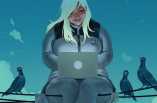
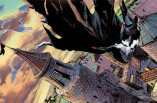
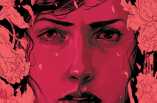
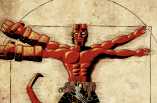

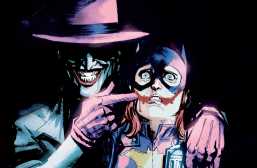
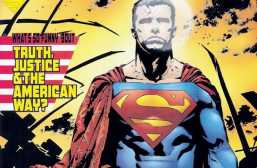
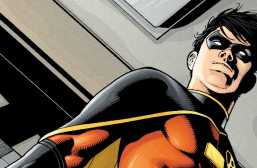
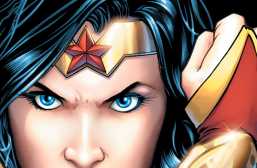
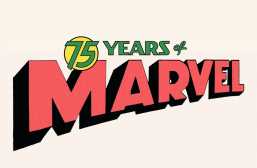
I’m in LOOOOVE with paper girls. It’s one of the best comic series I’ve read in a while. I’m just loving the story and the art. It’s wonderful and I need more now.
I think one of my favourite thing about these comics are the covers. There just super awesome. All those sharp colours that fit so well together!
Saga is great… great story and beautiful illustration.
I have never really read comic books before. I hate the look the look of manga’s, but I decided to give Y: The Last Man a chance. I finished the first book and was instantly hooked. The plot is creative, suspenseful, grabs hold of your attention and keeps you wanting more. I’ve finished the 3rd book and can’t wait to start the 4th. I’m a 17 year-old girl and definitely recommend everyone reads it. I even got my 14 year-old sister hooked.
I think Vaughan is a bit overhyped in general but he’s consistent.
Having read the article, and seeing why I like him, who/what else would you recommend?
My question, too.
I have never outgrown my love for good comics.
Haha, love that quote from LOST! “The Man from Tallahassee” is one of the best LOST episodes.
I was very impressed with his word.
The artwork is brilliant!
The first volume of Saga had me hooked right away: something about the clean lines of the art, the way it perfectly brings across character and expression!
I’ve read some of his Runaways stuff, but I’ve yet to check out Y: The Last Man and Ex Machina (I do really want to read both, I just haven’t gotten around to it yet).
So amazing and weird comics.
I first heard of Saga from the guy at the comic book shop who said I’d probably like it since it was realistic, much like whatever I was there to buy that day.
In retrospect, I don’t know if I misheard him, or if we have very different definitions of reality. Or perhaps he meant there was a lack of superheroes. Anyway, I haven’t seen that guy again, so I can’t really ask, but the bottom line is that this is as far as realistic as I can imagine.
I first heard about SAGA through my dad, of all people. I think the only graphic novels my dad has ever read are ones that I gave to him. But he saved an article about the Wall Street Journal about the cover of the first issue for me, just because it sounded like my kind of thing. Yep, my dad knows me.
I love BKV and will read anything he writes, that being said, i think Paper Girls is the most captivating and intriguing of his NEWER works that came out. I think the combo of 80s pop culture mixed with sci-fi works well together. I tentatively read all 6 issues of We Stand on Guard without any real enjoyment of the plot or characters.
I also think We Stand on Guard needed more time to really delve into the ideas it was exploring. The whole story in 6 issues felt a bit crammed to me. I think it needed 10 or 12, and then it could have taken its time and explored the characters a bit more.
Paper Girls is amazing.
The art is brilliant, the world building is top notch.
I’m relatively new to comics, so the only work of his I’ve been reading is We Stand On Guard, but I am quite enjoying it!
Read Saga and I’m going to be completely honest with you. I did not expect to like these at all, mainly for the whole “forbidden love” concept. I do not enjoy “forbidden love” in stories but- this series caught me by surprise.
Loved reading Y: The Last Man! Though the ending left something to be desired.
Love the guy. He’s one of the best things that have ever happened to comics, yet he constantly diverts all praise to his co-creator/artist.
He also does a great job choosing co creators. He’s definitely my favorite comic book writer, but Fiona staples art in Saga really brings it to the next level, and whoever did Ex Machina fit the tone of the series really well. I’m pretty sure the shifted artists for y occasionally, but it was definitely best with pia guerrara. I think he works really well with artists, and since that’s what makes comics a unique medium, that’s truly the mark of a good writer.
While Saga is very good, and highly acclaimed, Runaways is my favorite comic series I’ve ever read, and Saga can’t really top it to me.
I actually have not read Runaways yet, but I suppose it is time to look into that!
For my money his best work was Y the Last Man. I think Saga suffers from a little to much flight of fancy. I mean it’s great don’t get me wrong, but it kind of takes away from the story when one minute you have a heart warming scene. A few panels later you have a giant with a huge dick.
Saga might be my favorite due to the magical/sci-fi setting, but I think Y: The Last Man will go down as Vaughan’s best work. I haven’t read Ex Machina yet though; hopefully I’ll pick it up soon.
I think that two words can sum up how I feel about his graphic novels: HELL YES.
I didn’t even realize We Stand On Guard was written by Vaughn until I read this, and I own it. Honestly, it’s a topic I used to think about a lot when I was a kid (and still do from time to time), and I do wish it had been longer, or that these were 6 out of many more issues. It’s one of those comics that instantly made me wish it was a TV show.
BKV is the best creator in comics today.
saga is the greatest thing ever written
I still find Runaways to be his best work so far and enjoyed Y: The Last man all the way through and have already tired of Saga.
GREAT stuff. His other work has had the benefit of actually having an ending.
Saga has lost a lot of steam, I’m still buying it but I’m never super pumped for it.
love love love saga love love love paper girls!
Now this is exactly why I love the Artifice!! You have a platform where you can read amazing articles by similar like-minded individuals while also getting recommendations of awesome works to read. I have to read Saga, now. I am definitely buying it, and I am absolutely looking into Paper girls! Very excited. Great article, filled with enthusiastic descriptions, and excellent images.
Thanks! Your words are kind – for what it’s worth, since writing I have picked up Runaways (thanks to recommendations here, and BKV’s name, obviously), and I am absolutely loving that so far.
I’ve only know Brian K. Vaughun though Saga, but I am really fascinated in reading his other works after reading this, Pride of Baghdad particularly.
Also, Ghus is totally awesome 🙂